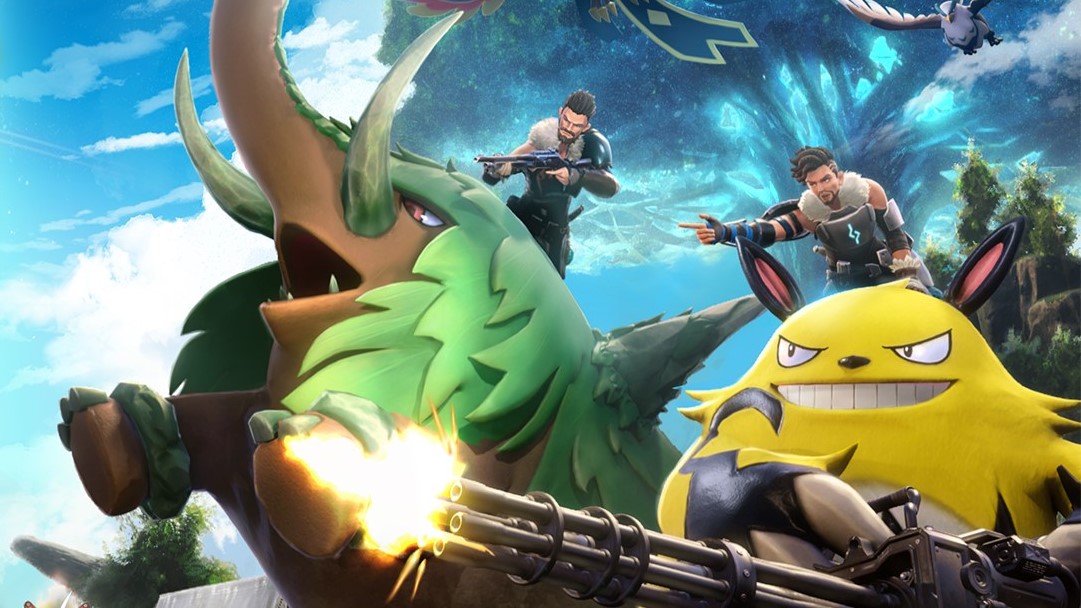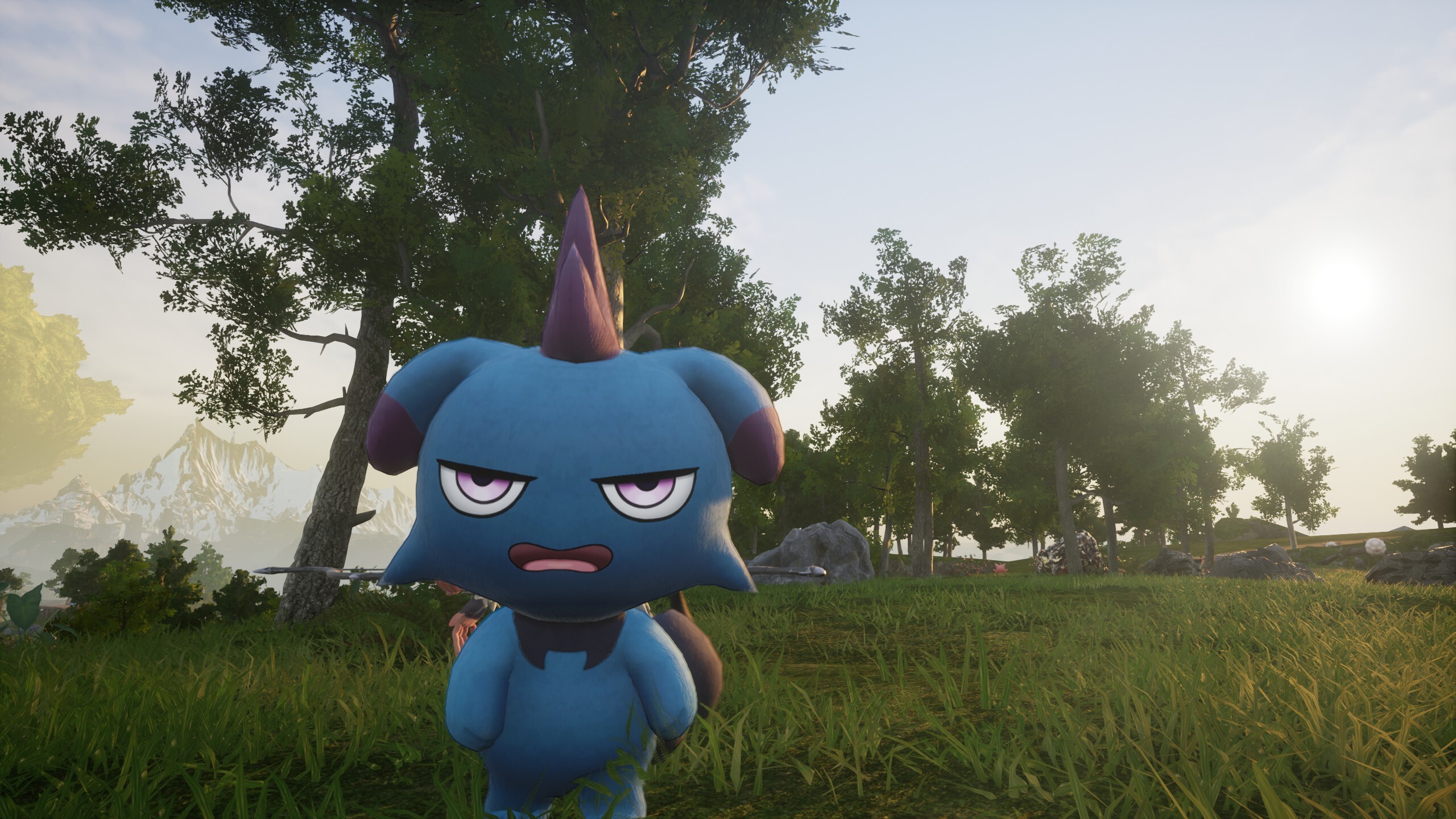Palworld isn’t good enough—or bad enough—to warrant us losing our collective minds over it




Sometimes a game will make its way into the public spotlight not because it’s good, inventive, or bad—but simply because it is. It captures a specific moment and gets a bunch of attention at a specific point of time. A small moon that casts a big shadow, like a solar eclipse. Palworld is one of those games.
Arriving at the height of anti-Pokémon sentiment—or at least the mirage of such, I don’t play Pokémon, and I know that ‘people complaining online’ is different from reality—Palworld has ticked some specific boxes which I think have launched it into the stratosphere.
It’s a somewhat-edgy, competent survival game with a core concept just dumb enough to be streamable. I don’t mean ‘dumb’ as an insult there—in fact it’s a compliment. I can pretend that I’m some bastion of fine taste all I like, but even I cannot deny the allure of blowing bad guys up with a chicken’s explosive eggs.
As PC Gamer’s own Rich Stanton puts it, it’s a game that promotes “sheer fun”. But depending on who you ask that’s either all games are required to be—or paying deference to an antichrist of gaming. One which tolls the bell for a game-pocalypse of AI-generated slop. I’m exaggerating of course, but I feel the need to take a deep breath and say: I don’t think Palworld itself is worth the energy, for good or for ill.
The AI/Plagiarism thing

First up, let’s look at the AI-generated Cufant in the room. Palworld is a derivative game from a design perspective and a visual one. Design-wise, it’s a base building survival crafting game, and we all know how many of those there are. Visually there’s the whole Pokémon thing.
This has resulted in a swarm of pointed fingers—with accusations of AI art and even directly ripping models from Pokémon games. At the time of writing these claims are unverified.
To be perfectly clear: I do think it matters whether or not Palworld uses AI, and to what extent. Considering the CEO of Pocketpair’s past fascination with the tech, it’s a totally understandable gut reaction. It’s one I’ve even shared to an extent. At present though it’s just that—a gut reaction. A feeling. A vibe.
I think the fear of what Palworld might represent is linked to a wider industry context. 2023 was a year of catastrophic layoffs, and 2024 has already had a rotten start with huge, sweeping reductions at Blizzard and Riot. None of these fears of AI or asset-flips are unreasonable, but I can’t help but question whether this particular $30 early access game is the big fish to fry.

Does Palworld actually represent a corporate boot currently kicking talent out of the industry in favour of machine learning? I don’t know if it does. For starters, it’s an independent studio. Though its past and future projects are cynical—Craftopia, AI: Art Impostor, and the upcoming totally-not-Hollow Knight Metroidvania Never Grave: The Witch and the Curse. In a way, Pocketpair mimics corporate trend-chasing to the same extent with it mimics design elements in its games. That is to say: A lot.
But does artistic integrity matter when the game is decent fun? Well yes, but also no. I’m being very helpful today.
If it’s true that Palworld used AI, you could also argue that its success will set an example that creates dangerous industry trends. But I feel like those trends are already—to the detriment of everybody—potentially happening at much larger studios, with a far bigger say in what becomes the normalised industry standard.
Palworld’s distinctly bootleg vibes also call into question its artistic integrity. To be clear, I do think the game has taken—let’s call it ‘hefty inspiration’—from existing Pokémon designs, and while I don’t think it’s some innocent homage, I do think Palworld’s characters are substantially different enough to just be uncomfortably similar or parody, rather than overt plagiarism.
But does artistic integrity matter when the game is decent fun? Well yes, but also no. I’m being very helpful today.
Games shouldn’t ‘just be fun’, but it’s fine if they are

I have never agreed with the idea that games are ‘”just fun”, and that’s all that matters. For starters, it’s false. Plenty of games that create unpleasant, unsettling, and frustrating experiences are valuable. Games that are “just fun” are also valuable and enjoyable, but simple joys aren’t the only metric.
The idea that a game’s “fun” is all that matters is something utterly criminal to me—it’s a boring way to think about something you like. We should think about games in lots of different ways, and we should view them through lots of different critical angles. Because it’s interesting, and it’s what the medium deserves.
The idea that a game’s “fun” is all that matters is something utterly criminal to me—it’s a boring way to think about something you like.
Palworld may be fun to play, but it’s also a valid and valuable critique to point out the ways in which it feels lab-grown. It isn’t wrong to say that Palworld feels like a game designed in a meeting, that it was created to catch the updraft it did with a surgical precision. Even if none of those things will stop people, myself included, from enjoying it for a spell.
On the other hand, the fact people are playing and enjoying Palworld isn’t some great sign that games are in decline either. Music, films, and books have always had cynical works engineered for mass appeal, but none of those mediums are devoid of big-A art.

On a third, secret hand that I have hidden under my coat—fatcat corporate machines can crush budding artists and snuff out incredible works in the name of mass appeal, and that’s something to be wary of. It does, unfortunately, cost money to create and market just about anything, and smaller studios can’t rely on the luck of the draw that thrust Palworld into the spotlight.
Despite me and my three mutant hands, I don’t think Palworld’s success is that complicated. It should surprise nobody, and the idea that it’s a “bad game” because of its engineered appeal strikes me as strange. Is it really a sign of moral decay that people like sipping on some mindless sludge from time to time?
Is it really a sign of moral decay that people like sipping on some mindless sludge from time to time?
I do get it, though. It stings to watch great works fall into the drain of obscurity, especially when the current soylent slurry of the month is yet another survival game. But Palworld itself didn’t start that particular fire—it was simply shunted centre-stage by both a willingness to do the popular thing and a heavy dose of luck. As such, I don’t know if Palworld is the hill anyone should die on.
Ultimately, walking into an ongoing discourse and saying: ‘Hey, maybe the discourse itself is bad?’ won’t stop anybody, buzzkills aren’t popular. But Palworld is the first game in a while where the anger feels aimed at a target simply because the target is there.
Discourse, dat-course

Palworld—whether these criticisms are true or not—has become the temporary symbol of AI-generated slop, corporate trend-chasing, and bootleg knock-off derivatives all at once. And this may well all be unfair and unfounded.
But in a fantasy world where Pocketpair did do all that, and combusts to the strong arm of justice, what did we actually accomplish—returning a chunk of Nintendo’s market back to the fold? What did we prove, that you’ll only get in trouble for using AI if you’re small enough to be impacted by public opinion?
I’ll grab a pitchfork with the rest of you in the unlikely scenario that all these ‘maybes’ turn into one big great ‘definitely’. But I’ll have a bitter taste in my mouth—a feeling that the only reason we found any proof at all is because Pocketpair wasn’t experienced or rich enough to play the game it needed to play.
Source link




